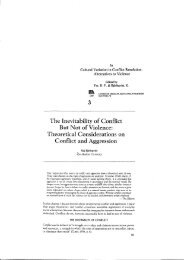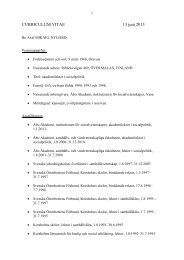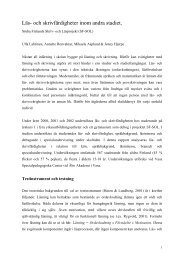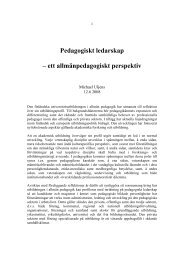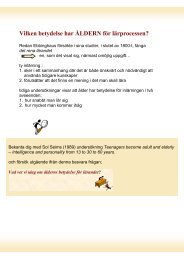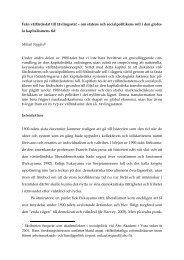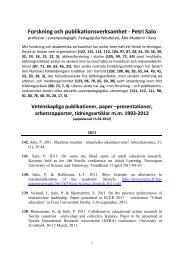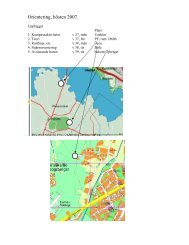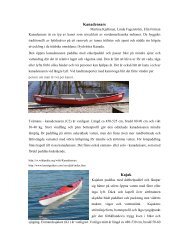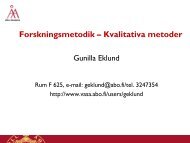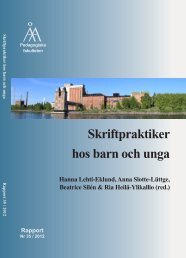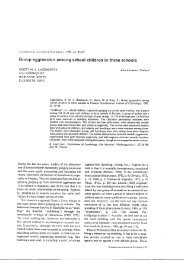Parties, Candidates and Citizens On-Line - Åbo Akademi
Parties, Candidates and Citizens On-Line - Åbo Akademi
Parties, Candidates and Citizens On-Line - Åbo Akademi
You also want an ePaper? Increase the reach of your titles
YUMPU automatically turns print PDFs into web optimized ePapers that Google loves.
RQ2a: What are the Finnish parties’ opinions concerning the importance <strong>and</strong> use of their<br />
website?<br />
RQ2b: What do the Finnish parties’ websites look like as to the actual content of the site?<br />
In sum, the study’s empirical part is designed as a two-step analysis in which the Finnish<br />
parties’ internet motives <strong>and</strong> strategies along with the contents of their websites are firstly<br />
explored. The results of the descriptive parts are thereafter used as starting points for<br />
exploring potential party patterns in light of the theoretical backdrop.<br />
Data <strong>and</strong> methods<br />
The study focuses on all Finnish parties found on-line, in total 15 parties. As the purpose<br />
is to explore the actor-constructivist viewpoint, the study necessarily focuses on one<br />
single country. This eliminates the inference of macro-level aspects in the analysis.<br />
Circumstances such as variations in party systems, electoral systems, media system <strong>and</strong><br />
other institutional factors also influence party behaviour (Rohrschneider 2002, 378).<br />
Focusing on one country isolates the inter-party variations relevant to the study.<br />
When seeking to study inter-party variations in party ICT conduct <strong>and</strong> its potential<br />
connection to variations in several party characteristics, one needs to analyze a country<br />
which a priori appears to have sufficient variation of political parties (cf. Hansen et al.<br />
2005, 3-4). The Finnish multiparty context 1 without any single dominating party, with<br />
parties of different sizes <strong>and</strong> a history of ideological cleavages <strong>and</strong> different types of<br />
voters (Djupsund 1990, 20; Sundberg 1996, 147-152) arguably meets this criterion.<br />
Moreover, Finl<strong>and</strong> is a suitable case for studies of internet activity, as the country has a<br />
relatively high level of internet penetration 2. The country is also among the world leading<br />
countries in terms of internet usage by political actors (Gibson & Römmele 2005, 10).<br />
Furthermore, the relatively high level of internet penetration has long been fulfilled (cf.<br />
Norris 2000) <strong>and</strong> signs of an emerging ‘web electorate’ are evident (Bengtsson &<br />
Grönlund 2005; Borg & Moring 2005; Moring 2003). Hence, the Finnish political parties<br />
are relatively familiar with the web compared to countries where political parties are soto-say<br />
still ‘learning the ropes’ of political internet use.<br />
In order to asses the parties’ opinions concerning the importance <strong>and</strong> use of their<br />
website, a self-completion questionnaire was sent to the parties’ information official (cf.<br />
Gibson et al. 2003b, 90). In total, the official from 11 of the 15 parties with websites<br />
responded. The questionnaire’s items centred around six scales of interest concerning the<br />
parties’ website (See Appendix A); firstly, labour input, secondly, central planning of website,<br />
thirdly, importance of the website in different areas compared to other communication<br />
channels, fourthly, general opinion of party websites, fifthly, informative communication, <strong>and</strong><br />
93



